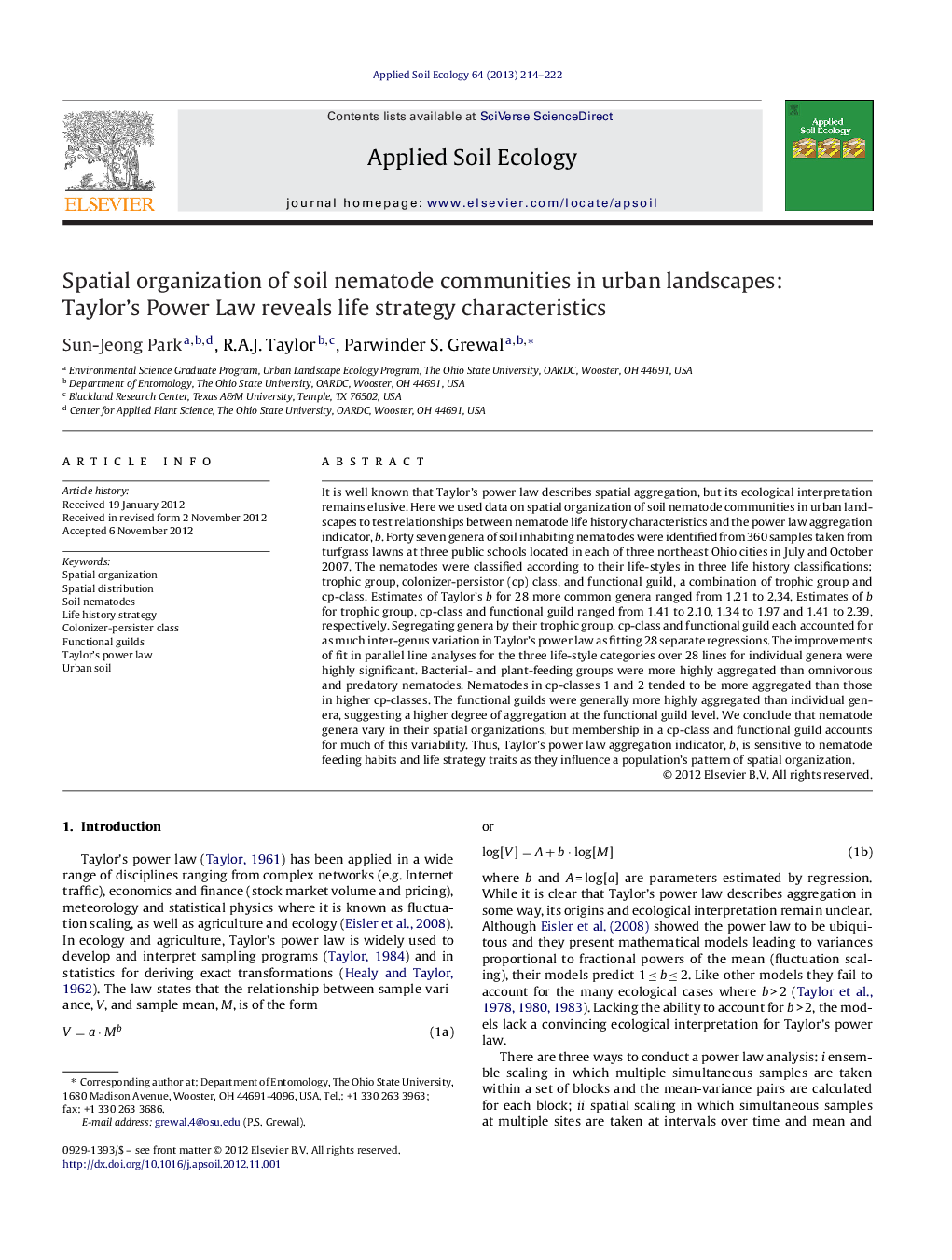| کد مقاله | کد نشریه | سال انتشار | مقاله انگلیسی | نسخه تمام متن |
|---|---|---|---|---|
| 4382476 | 1617819 | 2013 | 9 صفحه PDF | دانلود رایگان |

It is well known that Taylor's power law describes spatial aggregation, but its ecological interpretation remains elusive. Here we used data on spatial organization of soil nematode communities in urban landscapes to test relationships between nematode life history characteristics and the power law aggregation indicator, b. Forty seven genera of soil inhabiting nematodes were identified from 360 samples taken from turfgrass lawns at three public schools located in each of three northeast Ohio cities in July and October 2007. The nematodes were classified according to their life-styles in three life history classifications: trophic group, colonizer-persistor (cp) class, and functional guild, a combination of trophic group and cp-class. Estimates of Taylor's b for 28 more common genera ranged from 1.21 to 2.34. Estimates of b for trophic group, cp-class and functional guild ranged from 1.41 to 2.10, 1.34 to 1.97 and 1.41 to 2.39, respectively. Segregating genera by their trophic group, cp-class and functional guild each accounted for as much inter-genus variation in Taylor's power law as fitting 28 separate regressions. The improvements of fit in parallel line analyses for the three life-style categories over 28 lines for individual genera were highly significant. Bacterial- and plant-feeding groups were more highly aggregated than omnivorous and predatory nematodes. Nematodes in cp-classes 1 and 2 tended to be more aggregated than those in higher cp-classes. The functional guilds were generally more highly aggregated than individual genera, suggesting a higher degree of aggregation at the functional guild level. We conclude that nematode genera vary in their spatial organizations, but membership in a cp-class and functional guild accounts for much of this variability. Thus, Taylor's power law aggregation indicator, b, is sensitive to nematode feeding habits and life strategy traits as they influence a population's pattern of spatial organization.
► Taylor's power law is widely used yet its ecological interpretation remains elusive.
► Spatial organization of soil nematode communities in urban landscapes was studied.
► Nematode spatial organization differed by genus, feeding habit and functional group.
► Bacterial and plant feeders were more aggregated than omnivores and predators.
► Nematode life history traits and power law aggregation indicator, b are related.
Journal: Applied Soil Ecology - Volume 64, February 2013, Pages 214–222